What Are Your Organizational Data Habits?
“There were 5 exabytes of information created between the dawn of civilization and 2003. Now, that much information is created every two days”-Eric Schmidt, Executive Chairman at Google.[1]
Few are strangers to the depths and intricacies of the information age we have been swimming in collectively for the past two decades, especially in EHS. Daily, EHS professionals are faced with overcoming many decision hurdles that require access. Access to reports, team communications, visuals (both qualitative and quantitative) and many more critical pieces of information.
We, as an EHS community, depend on information streams to be effective, compliant and safe at all levels of the organization and this level of accessibility is often challenged by finding and using the right information at the right time.
That is what we will be diving into today, the information problem: how do we get the right people, equipped with the right knowledge to make the right decision at the right time?
The answer is simple in concept; have the right data. But what is the right data? How do we get it? What do we do when we have it? How do we present it?
As simple as it may be to know what data is the right fit for EHS systems, managing it can be a tall task. In a 2019 Verdantix survey of EHS leaders, 70% said they lack quality data and analytical tools and 60% said the cost of analytics projects outweighed the benefits.[2]
It’s clear the information problem occurs at both the input (data collection) and output (analytics) layers of most EHS systems. But, why is that? You would think being neck-deep in informational data would make the process of capturing decision-critical insights easy. That is not the case!
According to a study at the University of Hawaii, nearly 90% of spreadsheets contain significant errors[3]. Meaning, if you’re using spreadsheets to manage your EHS data, there is a high likelihood that the data is compromised which could have major implications. Moreover, the data that is correct may be unusable; a survey conducted by Qlik and Accenture found that only about one in five people are confident in their data literacy skills, and 74% of employees actually feel overwhelmed when working with data.[4]
“This has led employees to doubt or ignore data,” Jordan Morrow, global head of data literacy at Qlik, said during a recorded panel session. “How often is a company saying to us that they’ve invested in new software and technology to get data into our hands, but how many of us have a background to take that data and do something with it?” How many people went to school to study mathematics and statistics?”[5]
So, what do we do? We cannot delete all our data and start over, and we cannot hire a bunch of mathematicians and data scientists to confirm that 1+1 =2.
We can start and embrace an organization-wide data culture. A data culture is about collectively acting and believing in the value, practice, and enablement of data usage to improve decision-making in all facets of an organization [6]. It is the process of peeling back the meaning behind the numbers and
providing your team, co-workers and leaders with the purpose data serves within and throughout your organization.
And don’t worry, it is not rocket science! Here, at ITRAK, we’ve built our data culture on four pillars:
1. Collection:
It may seem trivial at this point that data collection is essential to a thriving data culture but that doesn’t make it any less significant. Data collection is the foundation of your organization and ensuring the data collected is accurate and comprehensive is as paramount as the safety practices you are responsible for.
Some things to avoid:
- Inconsistent methodologies- Most organizations face the reality that data is not only collected differently department by department but person by person. This is usually a result of the lack of standard operating procedures for organizational data collection. Standardizing what and how information is collected can drastically shift the operability of the information your organization collects (or doesn’t collect). Naturally, there is variability in which data is relevant and to whom it is relevant to but having a standard approach to getting data into your system minimizes the foundational cracks this variability can bring.
- Limited access to real-time data- Nothing inhibits the effectiveness of data like it being outdated. Especially in cases where timeliness is everything, it is exceedingly difficult to operate essential functions like compliance management without real-time capabilities. This doesn’t mean you need to buy every IoT sensor on the market but finding ways to monitor today’s most critical data points can make a difference. Imagine your team is working on a piece of an oil pipeline in a remote location and you have access to satellite and/or drone footage. Identifying possible avalanches or landslides goes from a stressful, inaccurate process to a manageable and straightforward path to a successful operation.
- Not capturing all relevant data points- The only thing worse than outdated data is not collecting data that is relevant to your business activities! Not only are you handicapping your ability to make informed decisions, you run the risk of acting on incomplete information and facing extra complications that could have been avoided with relevant metrics from quality sources. What good is a puzzle if you are missing pieces?
2. Stewardship:
Stewardship is about understanding the importance of maintaining and curating data. As mentioned earlier, you should not need to be a mathematician or a data scientist to identify the knowledge you are looking for in the infinite void of raw data. Quality data stewardship ensures that the right data hygiene and accessibility mechanisms are in place to find and use the data relevant to your role. These policies could include maintaining a PowerBI report highlighting field operators’ competency levels across key performance indicators in a nice, easy-to-read dashboard.
Common challenges:
- Not updating old data- To reiterate an earlier point, outdated data is unusable data. Take the time to ensure important metrics are updated regularly and that all new data is entered and processed in the right way.
- Not verifying data accuracy- Finding errors in a table can be a struggle but it is worth the price to ensure well-defined datasets that provide valuable insights and information for decision makers. Some common techniques to overcome this hurdle include ensuring formulas are making correct calculations, null or empty values are imputed with a fair value (ex: average for the data point), and each data point is using the correct data type (an integer is kept as a whole number, and a decimal is kept as a rational number).
- Not having clear responsibilities for data management-This goes with a business essential, communication. If there is no comprehensive data management process and who is responsible for what part of maintaining the database, all other stewardship systems become obsolete. It is important to recognize that those responsible for keeping the database organized and up to date do not need to be “numbers people”. With the right approach to outlining best practices and quality documentation on how to correctly update and refine different datasets, anyone can be a data steward!
3. Storage:
The significance of data storage in today’s digital world cannot be understated. An organization can have the best data collection and stewardship practices in place, but if the storage solutionsare nott robust and reliable, it could all be for naught.
Key Points to Consider:
- Centralized vs. Decentralized Systems: Centralizing your data storage can streamline access and data integrity efforts. However, ensure that you have secure access controls in place to prevent unauthorized access.
- Data Backup Protocols: It’s not just about storing data but also ensuring it can be recovered in cases of data loss. Regular data backups and testing of recovery processes are essential.
- Security Measures: With the rise in cyber threats, protecting your EHS data from breaches becomes paramount. Consider encryption methods, secure access controls, and regular vulnerability assessments.
- Scalability: As your organization grows, so will your data. Ensure your storage solutions can scale without causing a degradation in performance or accessibility.
4. Analytics:
The true value of data lies in how it’s analyzed and leveraged to make informed decisions. Analytical processes can transform raw data into actionable insights, which can shape the future of an organization’s EHS practices.
Key Elements of Effective Analytics:
- Leveraging Modern Analytical Tools: Gone are the days of manual data analysis. Tools like PowerBI and specialized EHS analytical software can automate and enhance data interpretation processes.
- Training and Development: It’s not enough to just have the tools. Ensure your team is trained to utilize them effectively. Regular workshops or onboarding sessions can greatly enhance data literacy within your organization.
- Deep Diving: Don’t just scratch the surface. Go beyond the obvious metrics and delve deep into data patterns, anomalies, and trends.
- Visualizations: A picture is worth a thousand words. Visual representations of data, like graphs, charts, and heat maps, can simplify complex data sets and make them more digestible for all stakeholders.
The Way Forward: Building a Holistic Data Ecosystem
In the age of digital transformation, establishing a healthy data culture is more than just a need – it’s a necessity. By focusing on the four pillars of EHS data management—Collection (answering ‘What is the right data?’), Stewardship (tackling ‘How do we get it?’), Storage (addressing ‘What do we do when we have it?’), and Analytics (solving ‘How do we present it?’)—you can establish a comprehensive framework to guide your organization’s data endeavors.
And as the data landscape continues to evolve, it’s essential to stay agile. Regular audits, continuous training, and investment in technology will ensure your organization remains at the forefront of EHS data management.
Refrences:
[2] https://www.dakotasoft.com/blog/2022/11/14/understanding-ehs-analytics-part-1-improving-data-literacy , https://www.verdantix.com/report/green-quadrant-ehs-software-2019
